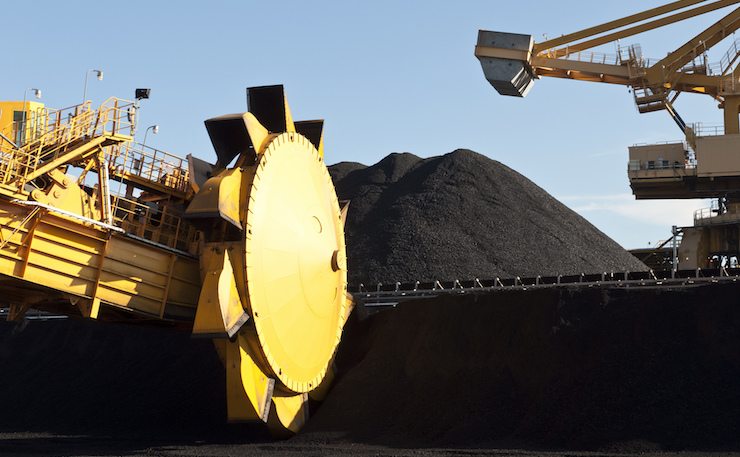You have to hand it to Adani Australia chief executive Jeyakumar Janakaraj. Despite years-long delays on Adani’s Queensland Carmichael coal mine – a project mired in court challenges and no realistic prospect of obtaining the financing it needs to proceed – Mr Janakaraj retains a cheerful disposition.

Last week he said Adani was “absolutely committed” to proceeding with the mine. The show of optimism is designed to obscure the fact that his company’s coal mine project looks increasingly likely to fail.
The Carmichael mine and associated coal port at Abbot Point have been the target of sustained opposition from a wide range of community organisations, both in Australia and overseas, because of the catastrophic impact they would have on the Great Barrier Reef. UNESCO has kept the Reef on its world heritage watch list due to the threat that projects like Adani’s pose to its health. In August 2015, a Federal Court challenge forced Environment Minister Greg Hunt to overturn the approval for the mine. Two more legal challenges against the Carmichael project remain, and the project is yet to obtain mining leases from the government. The project itself is effectively stalled, with the Adani contractors who were sent home in 2015 still not back on the job.
Yet even if all of these obstacles were removed, the mine’s financials simply don’t stack up. A viable enterprise when coal prices were at their $140 per tonne 2012 peak, Carmichael’s forecast operating expenses mean that it cannot turn a profit at the current price, which is hovering around $50. The environmental and economic arguments against the mine have led 14 global banks to rule out involvement in the project, leaving it with no banks willing to lend Adani the money its $16bn mega mine needs to proceed.
So when Indian market analysts Axis Capital reported that Adani had frozen investment in the project, with “further investments [in Carmichael]dependent on visibility of revival in global coal prices”, it should have come as little surprise.
As acknowledged by analysts, including Goldman Sachs and Citi, the market for thermal coal, used for electricity generation, is in structural decline and being displaced by cleaner, more cost-effective renewables like solar and wind, accelerated by the growing momentum for action on climate change after last year’s Paris climate agreement. Even Adani itself is moving into solar power, with 800MW of new solar plants in the pipeline for India, as well as this week’s announced plans to build a utility scale solar plant in Queensland.
The project still has its defenders, of course. Queensland MPs, like Adani spruiker George Christensen, insist that Carmichael remains viable. Queensland state Environment Minister Steven Miles recently gave the mine its environmental approval and the Palaszczuk government continues to express broad support for coal mining in Queensland. And, unsurprisingly, Adani insists the project is going ahead.
These manoeuvres are best understood as part of a face-saving exercise by the Queensland government and Adani for the moment when the project is declared dead and buried. Adani will blame the onerous regulations and delays supposedly placed on coal mine developments in Australia. It continues for now to push for the mine’s final outstanding approvals in the hope that it might be able to sell the rights to the project and at least salvage a small portion of the billions of dollars it has already wasted. Queensland Labor has and will claim that it has done all it can to assist Adani to get the mine up and running, thereby avoiding the charge of not supporting Queensland jobs. It will point to the poor economic fundamentals of the project as the culprit.
The spin can’t hide the fact that the decline of coal, exacerbated by a cooling Chinese economy and a broader global commodities slump, is already being felt in Australia. According to BIS Shrapnel, the Australian mining industry has laid off 40,000 workers since 2012/13, with 20,000 more forecast to go in the next year. With the world’s biggest economies, including the US and China, announcing moratoriums on coal mine approvals, this decline will only accelerate in the months and years to come. Predictably, the Queensland Resources Council has already called for more taxpayer subsidies for the mining industry. That’s on top of the $1.8bn in annual production subsidies already given to the coal mining industry, and the $5.5bn in direct subsidies or tax breaks given to fossil fuels.
This sorry state reveals the lack of political vision for the Australian economy beyond the waning era of fossil fuels. Instead of continuing to mouth support for coal mining, it is time our political leaders develop a serious plan for a fair transition for the hard-working Australians whose jobs are already being lost, and a coherent energy policy that sees Australia rapidly transition to renewable energy and take on the threat of climate change.
In parts of Australia, that future is already here. AGL recently completed its Broken Hill solar plant – the largest in the southern hemisphere – and Australia is a world leader in adoption of rooftop solar. It is indeed an exciting time to be Australian, as our PM has observed. That excitement will be sustained in the years to come not by clinging to obsolete 19th century technology, but by seizing a clean energy future.
This Op-ed first appeared in New Matilda


